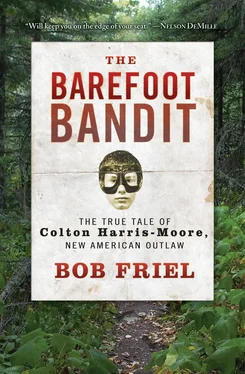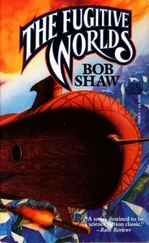Jeremy Trumble, who owns the Inn on Orcas Island and whose parents began bringing him here when he was a child in the fifties, describes arriving like this: “When we got here, my dad suddenly started driving more calmly and us kids started behaving better. You were friendlier to people because the island just invited that—it had this aura. Somehow, Orcas made you a better person. You just wanted to enjoy every moment that you had on the island because it was such a special place.”
Sandi and I were determined to live within that Orcas aura for more than two weeks each summer. We spent every spare moment figuring out how to knock years off what was first a retirement plan, then a fifteen-, ten-, and finally five-year plan to move to Orcas full-time.
We’d been able to buy island property only because, after a life spent as a hand-to-mouth freelancer, I had a steady magazine paycheck at a time when bankers were flinging mortgage money at anyone with a pulse. Creatively maxing out our finances still bought only a small, drafty cabin with floors that flexed so much you could knock a cup off the kitchen shelf by stomping on the bedroom floor at the other end of the house. A natural history museum’s worth of dead critters clung to the fouled insulation in the crawlspace, and the plumbing sounded as if flushing the toilet angered a clan of badgers living inside the walls.
The original owners had collected rainwater to bathe in and wash their clothes, and they used an outhouse for much of their time on the property, which they named Raven Ridge. When we moved in, the outhouse remained amid a copse of young cedars, standing by with a wonderful view of the water and a fresh roll of TP.
A contractor who came out to bid on bringing the septic system up to snuff brought along an old-timer who didn’t say a word while we poked at pipes and walked off distances that’d have to be dredged down our roller coaster of a driveway. Something about the quiet islander’s thoughtful manner said “common sense,” and at the end of the tour I sidled up and asked: “If this was your property, what would you do?” He looked me up and down, gave me a slight nod, and said simply, “I’d paint the outhouse.”
Our cabin windows looked out over nothing but woods and water without a neighbor in sight. The closest lights we could see were on a Canadian island. We never even considered putting up curtains. If voyeuristic eagles and raccoons wanted revenge for all my years of watching National Geographic, so be it. At night, those bare windows turned the darkest black. On Orcas, though, the darkness was never threatening.
From Orcas you can see Vancouver Island—which has North America’s highest concentration of mountain lions. You can also see a big chunk of mainland British Columbia, which has the most black bears. Not far up the Inside Passage are islands lousy with gigantic Ursus arctos horribilus —grizzly bears. However, the most dangerous wild animal on Orcas other than our overpopulated kamikaze deer is the river otter. Each evening, our dog, Murphy, and I walked the shadowy woods. There were plenty of noises to spark primordial tingles, but you always knew that nothing lurking in the Orcas forest had any intent more nefarious than gathering nuts and nibbling leaves.
I continued traveling frequently for assignments, but now I never worried about Sandi. She was perfectly safe at home, and if she broke down on the road, the next person along would stop and either fix her car or drive her to town. Teenage girls hitchhike around the San Juan Islands without a worry, and getting a ride is so easy that longtime residents think nothing of even counting on their thumbs to get them to the ferry on time.
So we settled in happily, having only the same great concern as every other working person on Orcas: Now that we found this wonderful place, how the hell do we afford to stay here? A good number of wealthy people live on the island, and many more have summer homes. The guy in front of you in line at the hardware store may be the ex-CEO of a huge multinational, a Hollywood producer, or a sickeningly young Internet retiree who optioned out of lastbubble.com just in time. At the other end of the scale, nearly 9 percent of San Juan County residents lived below the poverty line in 2008. There are people who are homeless and there are people who squat in illegal campsites, jetsam shacks, and barely floating boats. There are tarp-topped trailers and threadbare yurts, and a number of people you regularly see around the island look like they’ve escaped from somewhere.
In between the lost souls and CEOs lay the rest of us: retirees getting by and a working middle class of small-business owners, organic farmers, county workers, carpenters and other tradesfolk, plus an eclectic mix of sculptors, potters, painters, musicians, and writers—many of whom wish they knew carpentry or some other skill that might earn them a steadier income.
The island has no industries other than real estate, construction, and seasonal tourism, so there are very few jobs that pay enough to keep you alive in a place where the price of necessities like groceries and gas are 30 percent higher than the mainland. San Juan County has the second-highest income per capita in Washington State, but its average wage is ranked thirty-fifth out of thirty-nine counties. This means that while there’s a lot of money floating around the islands, very little of it is being made by residents who have to work for a living. Most of it comes via investment income of the rich and retired (one-fifth of Orcas’s population is over sixty-five). Property costs—which are bid up by the wealthy from all over the world who discover Orcas and want to own a piece as a part-time getaway—coupled with the few jobs and low wages make it especially hard for kids born here. They grow up in this fabulous, desirable place, but then many of them find they can’t afford to stay if they ever want to own a home of their own.
While I took on every assignment I could wrangle, Sandi went to work in real estate, because if there’s one thing in this world you can count on, it’s the real estate market.
As the crash began, Sandi picked up a second and then a third job, becoming one of many, many Orcas residents who work multiple jobs in order to help their family cling to what they think is the most wonderful rock on the planet. Orcas or bust.
I was drinking a late-morning cup of tea when the news reached me about Bob Rivers’s plane.
With some 230,000 general aviation aircraft based in the United States, there have been, on average, only eight stolen each year of the last decade. Nearly all of those thefts happen near or across the Mexican border, especially in Baja, where authorities say cartel lookouts keep watch for the right kinds of planes—primarily Cessnas—then call in trained air pirates to fly them off to join drug-carrying fleets. American private pilots even refer to certain antitheft devices that fit over throttles and props as “Mexican locks.”
Of course there’s another border to the north. Ever since it became part of the United States, Orcas Island, with its scalloped shoreline, deep fjords, and dark, secluded coves, has enjoyed a storied history as a transshipment point for whatever products the era’s taxes and laws made profitable to move from Canada into the lower forty-eight. Silk, wool clothing, Chinese laborers, opium for the Chinese laborers, Prohibition whiskey, and so on came through with a wink and a nod. At its closest point, the Canadian border lies less than a five-mile boat run from Orcas’s northwest tip. The beach at the top of the island isn’t called Smuggler’s for nothing.
Today, the most popular hooch flowing south from Canada is the mind-bendingly potent wacky weed called BC Bud that, according to our local Customs and Border Protection (CBP) officers, trades pound for pound with the cocaine headed north. The vast majority of drugs drive across the line hidden in trucks, but CBP has found weed, coke, and hockey bags filled with cash aboard boats crossing the 165-mile-long watery border that runs a zigzag course from the shore of the mainland, around the San Juan Islands, and out the Juan de Fuca Strait to the Pacific Ocean. The CBP’s Air and Marine base in Bellingham, just thirteen miles from Orcas, operates blistering-fast nine-hundred-horsepower patrol boats along with a Black Hawk helicopter loaded with all the high-tech surveillance goodies to keep watch on the sea border. Still, it’s the thinnest of thin blue lines.
Читать дальше












